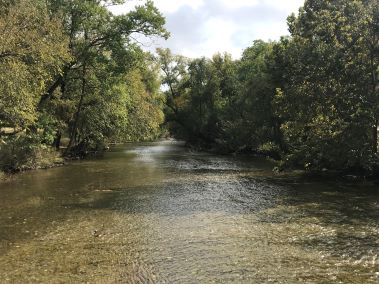
By Cyrus Reed
The Texas Commission on Environmental Quality has proposed a few positive updates to its Surface Water Quality Standards, such as addressing plastic pollution for the first time (though insufficiently), incorporating new EPA guidelines to protect aquatic life from cadmium pollution, and improving the human health criteria for two carcinogens (though slightly lowering the criteria for three others).
But, in addition to other shortcomings discussed in our previous coverage, the proposed updates also would implement negative changes to the uses of several specific stream segments.
The Sierra Club Lone Star Chapter will soon submit comments to TCEQ urging it to address the flaws in its updates, and we need your help! [UPDATE: Our Action Alert has closed but you can still submit comments to the TCEQ until May 2, 2022. Follow links to their online form here.]
Just north of Austin near Leander, in Williamson and Milam counties, TCEQ wants to remove the “public water supply” use designation for a large portion of Brushy Creek (Segment 1244). This downgrade would impact the segment starting upstream at the confluence of Brushy Creek with the San Gabriel River going to the most downstream edge of the Edwards Aquifer transition zone. Such a change by TCEQ would make it easier for a proposed wastewater discharge permit to dirty up the creek because it lowers requirements for certain pollutants like total dissolved solids.
Additionally, TCEQ is seeking to downgrade the aquatic life use designation for “intermittent” parts of Buckner Creek in Fayette and Bastrop counties (Segment 1402C) from “high” aquatic life use to “intermediate.” This particular use change is based on an analysis showing the creek is not flowing much of the year.
Finally, TCEQ is recommending downgrading at least two additional streams from the primary contact recreation standard (used for waters where people go swimming or wading) to the secondary contact recreation standard (used for waters where people have less body contact, mostly partaking in fishing, canoeing, kayaking, rafting, or boating). In other words, downgrading these water bodies means TCEQ is assuming no one is swimming or wading there.
If this downgrade is approved, people will potentially encounter higher levels of bacteria and other pollution when using these water bodies. The streams – South Lilly Creek (Segment 0409B) in the Cypress Creek area and San Miguel Creek south of San Antonio (Segment 2108) — could have as much as 630 colonies of fecal bacteria per 100 milliliters of water instead of the much safer standard of 126 colonies per 100 milliliters.
People who swim in waters with high levels of fecal coliform bacteria have higher chances of getting sick with fever, nausea, or stomach cramps because pathogens can enter the body through the mouth, nose, ears, or cuts in the skin. Such diseases and illnesses include typhoid fever, hepatitis, gastroenteritis, dysentery, and ear infections. High levels of fecal coliform also impact oxygen levels in streams and rivers, further harming aquatic life.
If you enjoy using any of these local streams, join us in urging TCEQ to strengthen its draft standards and pollution protections! [UPDATE: Our Action Alert has closed but you can still submit comments to the TCEQ until May 2, 2022. Follow links to their online form here.]